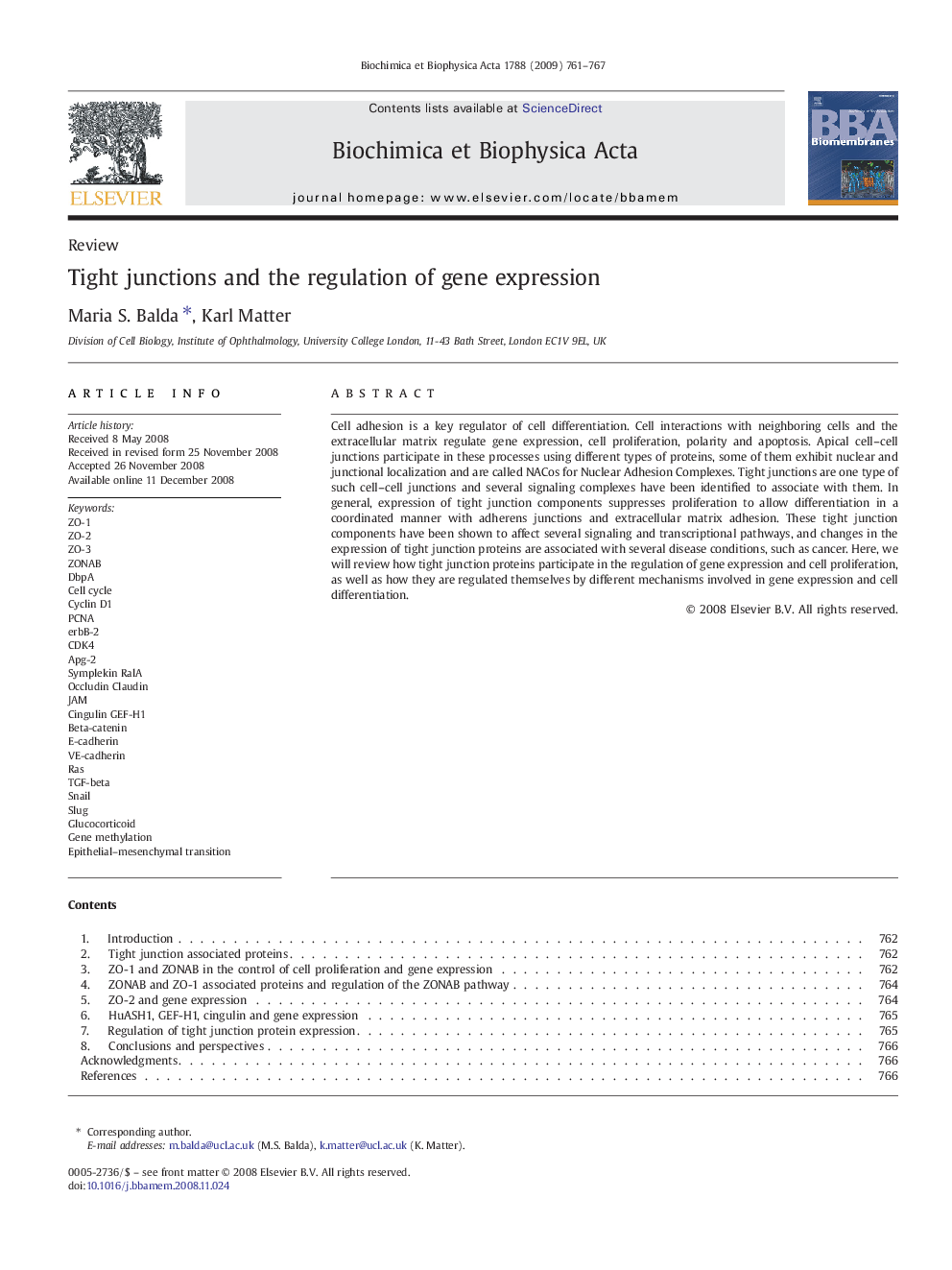| Article ID | Journal | Published Year | Pages | File Type |
|---|---|---|---|---|
| 1945205 | Biochimica et Biophysica Acta (BBA) - Biomembranes | 2009 | 7 Pages |
Cell adhesion is a key regulator of cell differentiation. Cell interactions with neighboring cells and the extracellular matrix regulate gene expression, cell proliferation, polarity and apoptosis. Apical cell–cell junctions participate in these processes using different types of proteins, some of them exhibit nuclear and junctional localization and are called NACos for Nuclear Adhesion Complexes. Tight junctions are one type of such cell–cell junctions and several signaling complexes have been identified to associate with them. In general, expression of tight junction components suppresses proliferation to allow differentiation in a coordinated manner with adherens junctions and extracellular matrix adhesion. These tight junction components have been shown to affect several signaling and transcriptional pathways, and changes in the expression of tight junction proteins are associated with several disease conditions, such as cancer. Here, we will review how tight junction proteins participate in the regulation of gene expression and cell proliferation, as well as how they are regulated themselves by different mechanisms involved in gene expression and cell differentiation.
